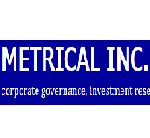
The FSA and TSE have been assiduous in encouraging more engagement between investors and Japanese companies, and in highlighting the problems raised by the ever-increasing share of funds invested on a passive basis in the Japanese market – which is leading to a sort of “hollowing out” of meaningful feedback from institutional investors. I would encourage anyone who reads Japanese to read the most recent Action Plan for corporate governance, especially including the reports by the Secretariat in the FSA’s May 16th meeting. This is very commendable.
On the other hand, there is a stark contradiction between this stance and a big defect in the machine-readability of the Corporate Governance Reports (CG Reports) submitted by Japanese companies to the JPX/TSE, which is regulated by the FSA . The defect renders a major portion of these reports almost entirely useless for rigorous analysis by computers… even though I pointed it out some six years ago. In a word, the 11 (or more) different “disclosure items” required to included in CG Reports, which account for close to half of the meaningful information in each report, are all mashed together into one XBRL “barrel” that does not even have a standardized format.







